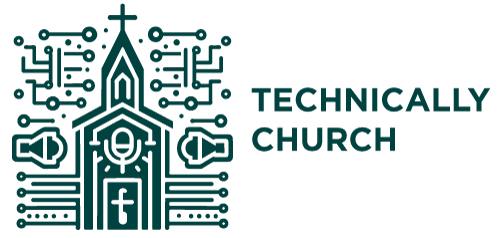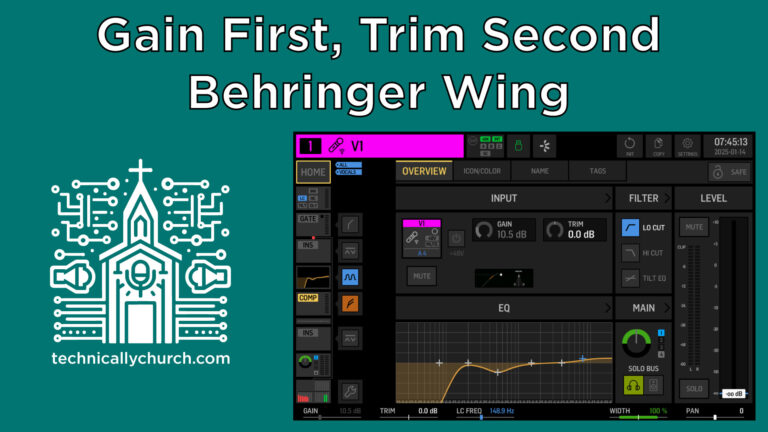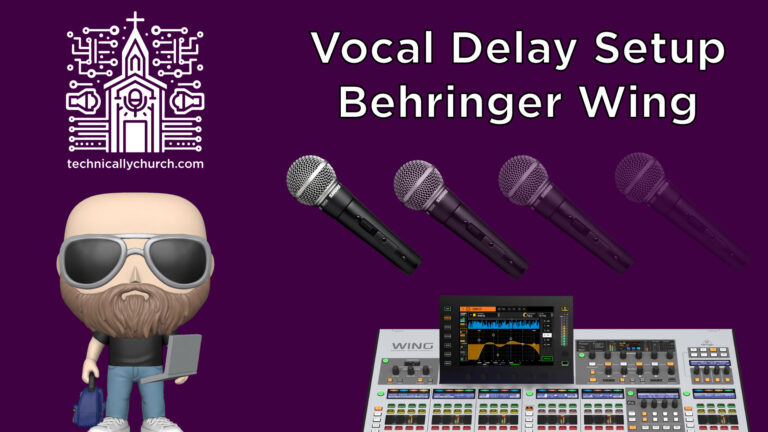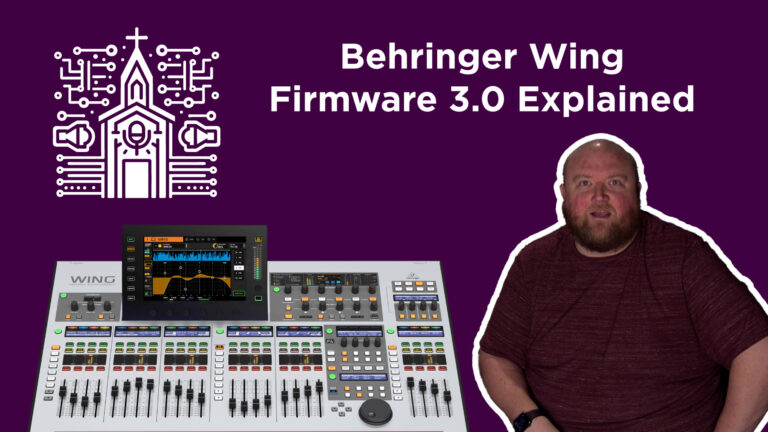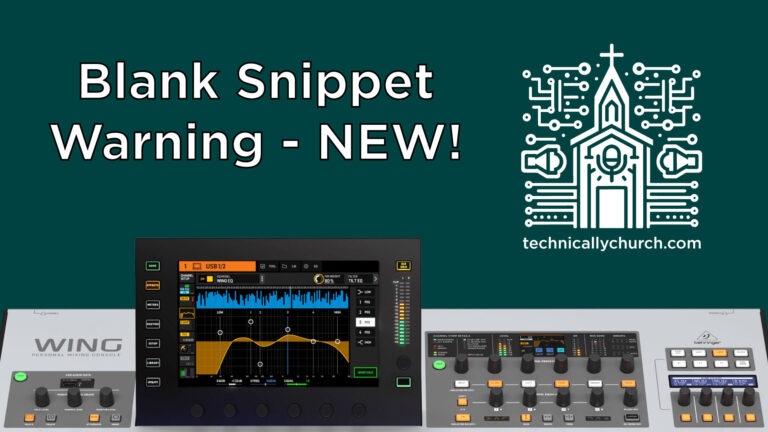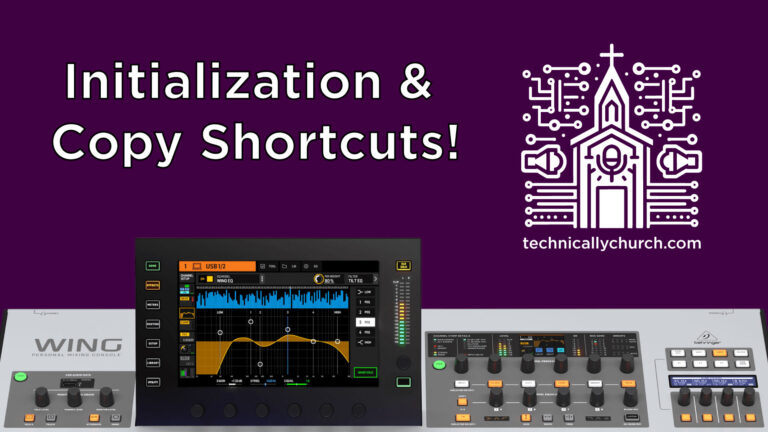Understanding Buses, Mains, and Matrices on the Behringer WING (Firmware 3.0.5+)
When working with a digital console like the Behringer WING—especially in a live church production setting—understanding how to utilize buses, mains, and matrices effectively can significantly improve both your workflow and your mix quality. With firmware version 3.0.5, Behringer made major updates to routing capabilities, particularly within the matrix system, making it critical to understand the signal flow and routing options available.
This article is a comprehensive guide breaking down what buses, mains, and matrices are, their roles in an audio mix, and how to use each one efficiently on the WING console, specifically on firmware 3.0.5 or later.
Signal Processing Order on the WING
Before digging into how each element works, it’s crucial to understand the signal processing hierarchy:
- Buses
- Mains
- Matrices
This means any combination or send routing must follow this path: a signal can go from a bus to a main or a matrix. A signal from a matrix cannot be routed “backward” into a main or bus.
1. BUSES — 16 Available
What is a Bus?
A bus is a grouping of channels used to combine audio sources into a single mix path. On the WING, you get 16 such buses, each independent and available for a variety of applications.
Typical Uses for Buses:
- Band Submixes: For example, all inputs from drums, guitars, bass, and keys can be submixed into a bus. This is helpful for grouped level control and effects processing.
- In-Ear Monitors (IEMs): Use buses for individual musician monitor mixes. Mix channels via ‘sends on fader’ to create customized IEM mixes.
- Effects Routing: Send multiple vocal mics into a bus with reverb or delay applied; then output that bus to mains.
- Submixing for Personal Monitor Systems: If you’re using Behringer P-16 personal mixers (which are limited to 16 channels), using buses allows you to combine several sources (like a full drum kit) into a single channel on the P-16.
Step-by-Step: Creating a Drum Bus for a P-16 Mix
- Choose an unused bus (e.g., Bus 1) and rename it “Drums.”
- Assign each drum mic/channel to Bus 1 using sends on fader.
- Balance channel levels within Bus 1.
- Route Bus 1 to the P-16 output (via Ultranet).
Pro Tip: You can also send one bus into another if needed for complex routing architectures or zone-based control.
2. MAINS — 4 Available
What is a Main?
Mains are similar to buses but are traditionally used for primary output sources like your PA system or house speakers. Prior to the WING, consoles like the X32 only featured one stereo main, so having four mains on the WING is a significant upgrade.
Typical Uses for Mains:
- Main PA (Front of House – FOH): Your primary loudspeaker system.
- Subs: For people who run subs separately from full-range speakers (ox-fed subs).
- Live Stream Mix: Create a separate fader-controlled mix for your online broadcast.
- Stage or Broadcast Feeds: For alternate zone mixes or recordings.
Each main can receive audio from:
- Any single input channel.
- Any bus.
- Multiple sources combined using sends on fader mixing.
Step-by-Step: Setting Up Multiple Mains
- Assign your FOH output to Main 1.
- Assign your subs to Main 2. Route only channels needing low-end (ex: kick, bass) to Main 2.
- Set Main 3 as a dedicated live stream mix.
- Use the routing matrix to assign each main to physical outputs (XLRs, AES50, Dante, etc.).
Note: With separate main outputs for subs and stream, you can apply different EQ, compression, and delay as needed.
3. MATRICES — 8 Available
What is a Matrix?
A matrix is a final output stage on the console used to compile and process a mix from existing subgroups (buses), mains, or, now with firmware 3.0+, even individual channels.
In older firmware versions (e.g., 2.0), matrices could only receive from buses and mains. From version 3.0 onward, matrices can receive audio from:
- Any individual channel
- Any bus
- Any main
However, because matrices come after the mains in the signal chain, they cannot route audio “upstream” back to buses or mains.
Typical Uses for Matrices:
- Zone Outputs: Send different audio mixes to lobby, green room, overflow seating, etc.
- Recording Mixes: Create highly controlled mixes for recordings or archive purposes.
- Broadcast/Streaming Feeds: Advanced post-fader mixes for streams using combined inputs.
- Additional Monitor Mixes: Use when bus count runs out.
Each matrix includes:
- Insert slots
- Full EQ section
- Output assignment routing
Step-by-Step: Creating a Lobby Zone Matrix
- Select Matrix 1 and label it “Lobby.”
- Send post-fader signal from Main 1 (FOH) to Matrix 1.
- Adjust EQ for the room acoustics in the lobby.
- Assign Matrix 1 to the appropriate physical output (XLR out, Dante, etc.).
Reminder: Effects like reverb should not be routed through a matrix if they need to go to the house mains. Matrices cannot send back to mains.
Signal Flow Summary
| Feature | Inputs Accepted | Can It Be Routed To | Processing Available | Count on WING |
|---|---|---|---|---|
| BUS | Channels | Bus, Main, Matrix | Full channel strip | 16 |
| MAIN | Channels, Buses | Matrix | Full processing | 4 |
| MATRIX | Channels, Buses, Mains | None | EQ, Inserts | 8 |
Final Tips and Use-Case Guidance:
- Use Buses for grouping and sending effects, submixes, and monitors.
- Use Mains for all core outputs: main PA, subs, and major feed destinations.
- Use Matrices for zone-specific mixes and more advanced output routing—not for system-critical components like vocal reverb.
Understanding this system is crucial for live sound engineers, especially in environments like churches where stage, audience, overflow areas, and streaming services all require separate yet cohesive audio mixes.
